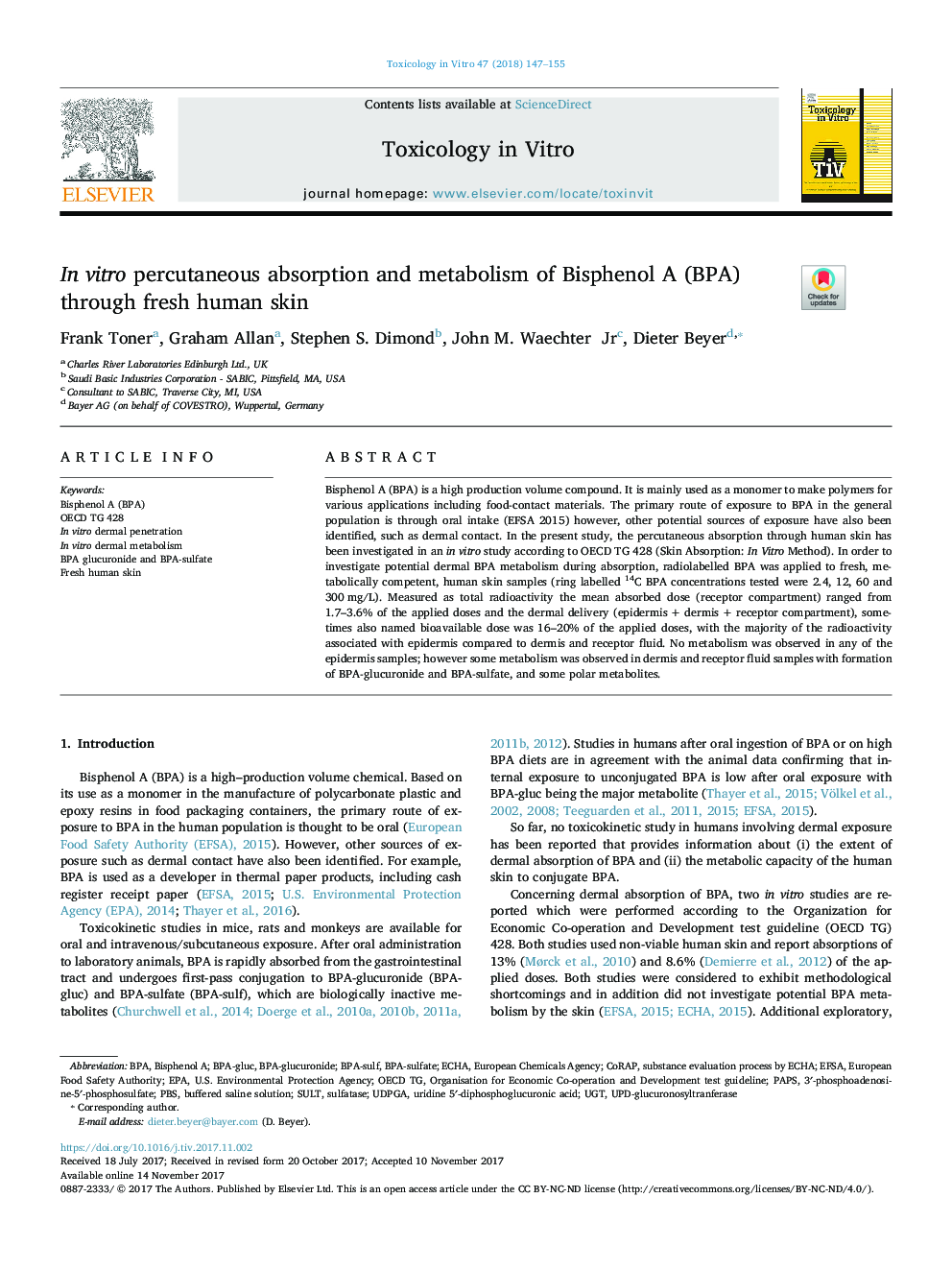| Article ID | Journal | Published Year | Pages | File Type |
|---|---|---|---|---|
| 8554074 | Toxicology in Vitro | 2018 | 9 Pages |
Abstract
Bisphenol A (BPA) is a high production volume compound. It is mainly used as a monomer to make polymers for various applications including food-contact materials. The primary route of exposure to BPA in the general population is through oral intake (EFSA 2015) however, other potential sources of exposure have also been identified, such as dermal contact. In the present study, the percutaneous absorption through human skin has been investigated in an in vitro study according to OECD TG 428 (Skin Absorption: In Vitro Method). In order to investigate potential dermal BPA metabolism during absorption, radiolabelled BPA was applied to fresh, metabolically competent, human skin samples (ring labelled 14C BPA concentrations tested were 2.4, 12, 60 and 300 mg/L). Measured as total radioactivity the mean absorbed dose (receptor compartment) ranged from 1.7-3.6% of the applied doses and the dermal delivery (epidermis + dermis + receptor compartment), sometimes also named bioavailable dose was 16-20% of the applied doses, with the majority of the radioactivity associated with epidermis compared to dermis and receptor fluid. No metabolism was observed in any of the epidermis samples; however some metabolism was observed in dermis and receptor fluid samples with formation of BPA-glucuronide and BPA-sulfate, and some polar metabolites.
Keywords
Related Topics
Life Sciences
Environmental Science
Health, Toxicology and Mutagenesis
Authors
Frank Toner, Graham Allan, Stephen S. Dimond, John M. Jr, Dieter Beyer,
